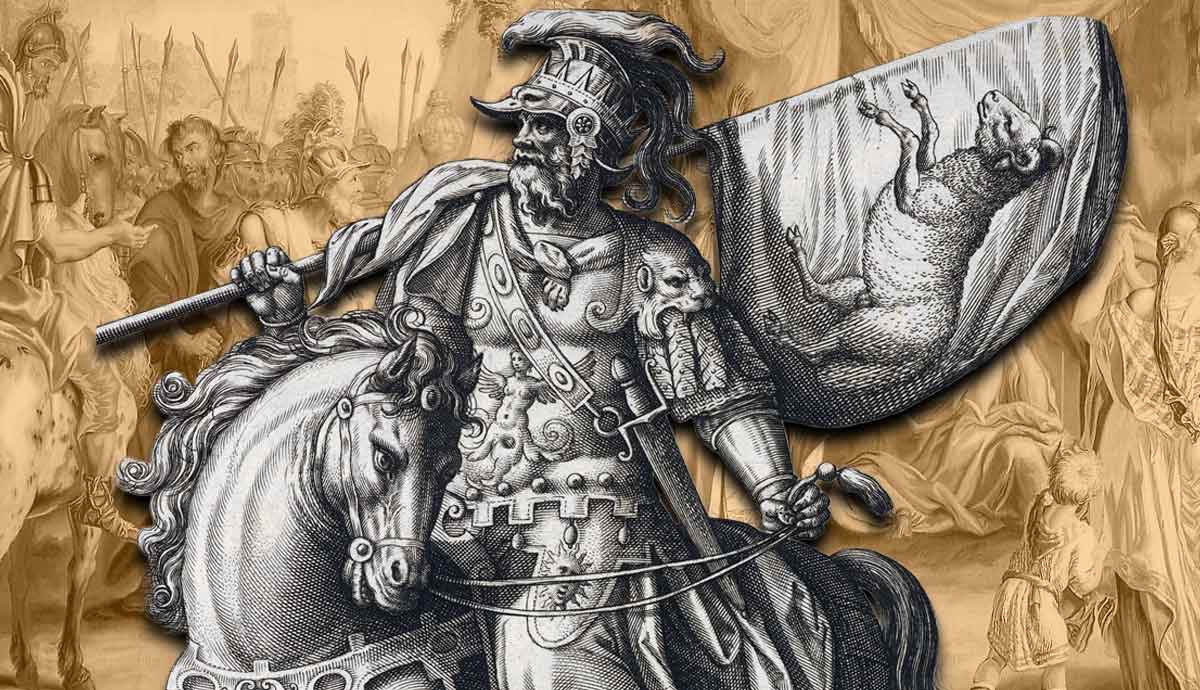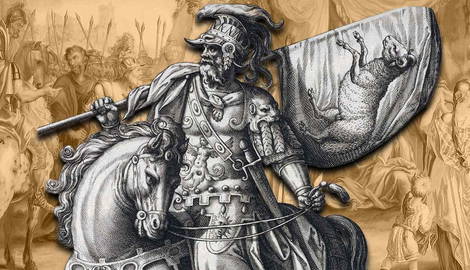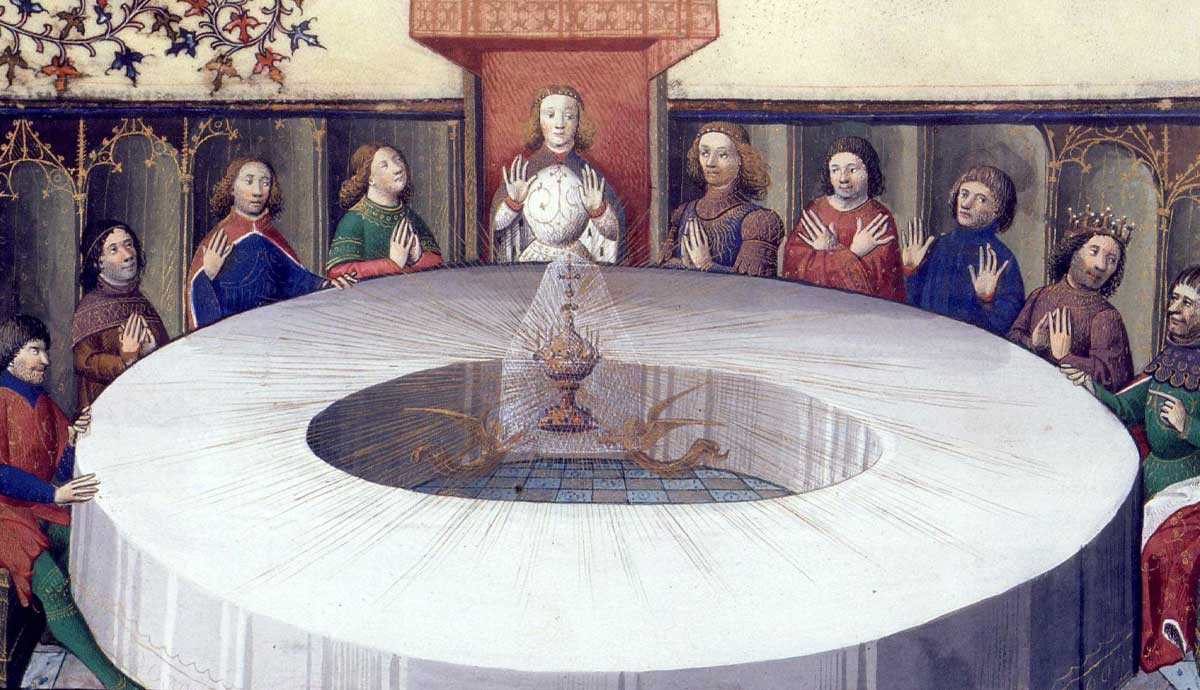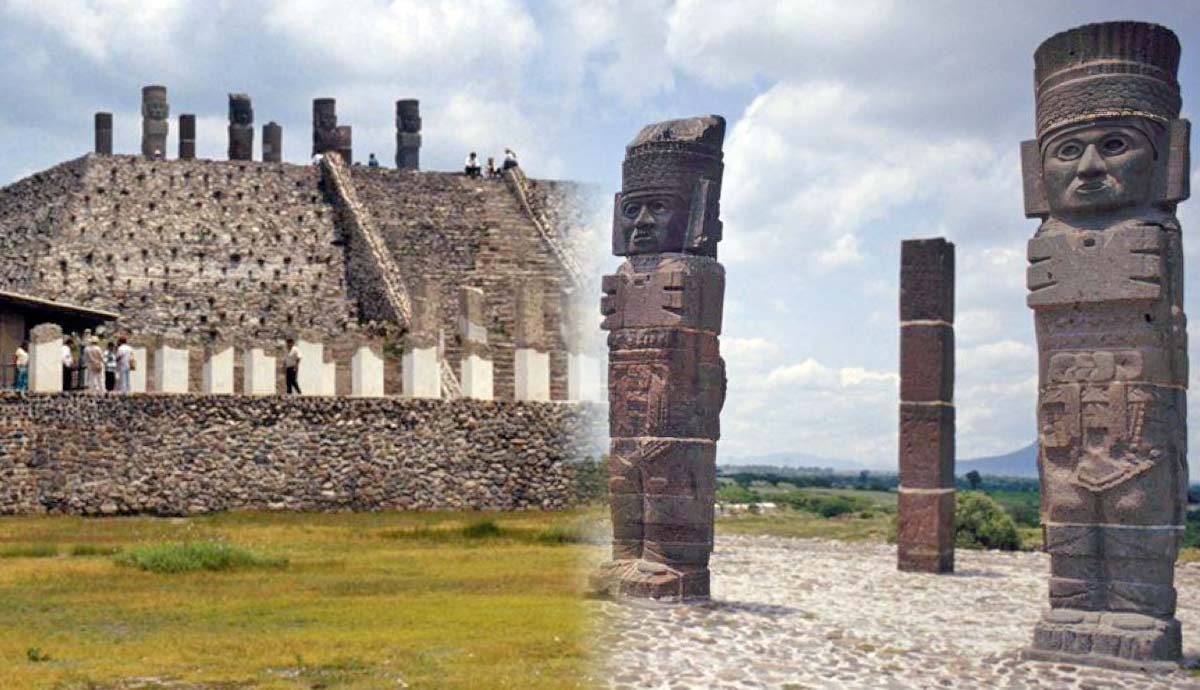
Cyrus the Great (590-529 BCE) was known as an innovative warrior and a benevolent king. He expanded the Achaemenid Dynasty to reach from the Mediterranean coasts to Himalayan hills. He encouraged the diverse people of his empire to practice their religions, continue cultural traditions, and participate in government. He showed respect for his enemies. Historians such as Herodotus and Xenophon documented his accomplishments, and he is celebrated in myths and Biblical stories. His unification efforts transformed the nomadic Pasargadae tribes of present-day Iran into the powerful Persian Empire.
Cyrus Prepared for the Life of a Warrior King

Cyrus the Great has a fascinating ancestry. His mother was the only child of the King of Media (Lieven, pg. 48). Like most young Persian men, Cyrus was taught to ride a horse, shoot a bow, and tell the truth. His father Cambyses was a patient instructor in each of these life skills, shaping his son to be a warrior and effective king. Cambyses was proud of Cyrus’ progress, praising him for his intelligent decisions, his physical strength, and his understanding of the kingdom’s problems.
Unfortunately, Cyrus’ father died in battle in 559 BCE. The loss of his devoted parent and teacher inspired Cyrus to become the leader his father had envisioned. Cambyses’ funerary rites reflected the pomp and rituals appropriate for a revered king (Jones, pg. 50). To honor his late father, Cyrus waited for five months before taking the crown.
Cyrus Becomes King of Persia in Pasargadae

King Cyrus II seemed blessed by the gods. Harbingers of good fortune surrounded his royal coronation ceremony in the verdant fields in the southwest of present-day Iran. The low rolling hills were blooming with carpets of red and purple poppies, and the pomegranate trees were heavy with fruit (Jones, p. 51). Court officials and priests conferred the titles of king and khan upon Cyrus in a solemn ceremony filled with Eurasian symbolism.
Cyrus, at about 30 years of age, was in the prime of life. He presented himself simply, without a royal aura. He did not wear robes lined with purple and gold or place a jewel-encrusted crown on his head. Yet, for the semi-nomadic Pasargadae tribal people he ruled, he was the epitome of a warrior and a fine specimen of manhood. He was the only ruler they desired, their chieftain, khan, and king. As Cyrus II grew in influence, they were the core of what would become the Achaemenid Empire.
Cyrus II’s First Conquest: Mastering the Medes

Cyrus’ first major recorded conquest was his mastery of the Medes, one of the premier powers of the early 6th century BCE (Waters, p. 55). Few contemporary sources document the Medes’ rise and their role in overthrowing the Assyrian Empire. The Greek historian Herodotus’ description of the Median Empire must be read carefully since counter-primary sources written during this period are incomplete (Waters, p. 56).
During the Assyrian Empire’s heyday from the late 9th century to mid-7th century BCE, the Medes were frequent targets of their Assyrian overlords. The Assyrians plundered Mede settlements in the Zagros mountains for horses, valuables, and manpower. Fortunes changed during the late 7th century BCE when the Assyrians were destroyed. The Medes and their Babylonian allies waged a three-month siege and sacked Nineveh in 612 BCE, ending Assyrian dominance in the region. Nineveh’s destruction was a significant event in shaping the history of the ancient Near East.
Modern historians have theorized that the Medes led a vast coalition of Iranian peoples across northern Iran and used their alliances to defeat Assyria. The political and military situation that faced Cyrus was Median dominance over multiple neighbors, each of whom owed allegiance, directly or indirectly, to a Median overlord without the formal structure of an organized empire (Waters, p. 59).
Cyrus II Captures the Median King

Friction between Cyrus II’s family and the Medes was a long-term conflict. With Cyrus’ inauguration as king, the simmering disagreements served as a pretext for him to confront his rivals. This proved more difficult than Cyrus had planned. His armies suffered three serious defeats before overcoming the Medes. Other kings might have reveled in victory, but Cyrus displayed tolerance and leniency toward his adversaries. He incorporated his defeated enemy into his empire and allowed them to retain government positions. He assured the Medes that he had great respect for their culture since his maternal grandfather was Astyages, King of the Medes.
He cemented this bond by entering King Astyages’s tent, taking his place on the throne, and grasping his royal scepter. The Crown of the Medes was placed on his head. Rather than the vengeful act of killing his grandfather, Cyrus spared him and granted him a princely lifestyle for the rest of his life. Cyrus’ treatment of his grandfather gave him his reputation as a benevolent monarch.
Challenging Croesus, the King of Lydia

The Medes’ holdings, filled with rich grazing lands and fine houses, were instrumental in Cyrus’ future plans. The Medes also offered Cyrus a source of well-trained manpower to challenge his next target, the Kingdom of Lydia. The Lydians had expanded their realm to the west and east. They had consolidated their holdings in western Anatolia during the 7th century and had expanded in power and wealth by the time Cyrus rose to power (Freeman, p. 106). The King of Lydia, Croesus, ruled from Sardis, a sophisticated acropolis city. His army dominated western Anatolia, increasing Croesus’ vast wealth by plundering rival Greek city-states on the Anatolian coast. He also funded construction of the Temple of Artemis at Ephesus, one of the Seven Wonders of the Ancient World.
While the sheer wealth of Lydia made it a tempting target, Cyrus II was more interested in stamping out any remnants of Median resistance that remained in Croesus’ kingdom. He intended to continue territorial expansion and reap the benefits of overthrowing such a powerful rival (Jones, p. 61).
The Oracle Speaks Truth

Croesus himself harbored ambitions of expanding his powerful kingdom. He viewed the new Persian king as a threat and sought to destroy him before he became more powerful. Croesus recognized the high stakes involved, and before launching a military campaign against the Persians he sought advice from the Oracle of Delphi. To strengthen his chances of a favorable response, he gathered gold and treasures and asked the Oracle what would happen if he went to war against the Persians.
The Oracle’s prophecies were not literal statements, but cryptic riddles that required knowledgeable interpretation. The Oracle’s words were exactly what Croesus wanted to hear: “If you cross the Halys River, a great empire will fall.” Delighted by what seemed to be a prediction of defeat for his enemy, Croesus eagerly engaged in preparations for war.
Cyrus encountered the Lydian king with his army at Pteria. There, they fought a ferocious but indecisive battle. Croesus had to withdraw and disband his army since he was reluctant to compensate the large number of mercenaries on his payroll. This proved to be only the first of his mistakes. Croesus retreated behind his safe city walls without considering the possibility of Cyrus’ attempting a winter campaign. Yet this was precisely what Cyrus did. His hardy warriors wrapped themselves in cowhide coats and sheepskin trousers and pushed through the biting winds on their strong Nisean horses, their camping equipment and arms carried on camels, all in pursuit of the Lydian soldiers (Jones, p. 62).

When Cyrus finally arrived near the plains of Thumbra, near Sardis, Croesus was shocked. Cyrus used a variety of innovative tactics that amazed the Lydians. He used camels to resupply the arrows so that his archers could deliver a withering barrage. Using camels had another advantage: the Lydian cavalry were scared off by the smell of the camels. Without the threat of the feared cavalry, the Persians were able to destroy their enemy quickly. Croesus fled the field in disgrace, taking refuge in the acropolis above Sardis. He sent desperate messengers to his various allies on the Ionian coast, but they were unwilling to help. They saw Croesus as an oppressor, unworthy of support. The Persian besiegers captured the city in late December 547 and Croesus surrendered to Cyrus.
A fragmentary cuneiform text from Babylon confirms the fate of Croesus. He died at Sardis early in 546 BCE: “In the month Nsanu, Cyrus, King of Persia, mustered his army and crossed the Tigris below Arbela. In the month of Ajaru, he marched to the land of Lydia. He killed its King, took his possessions, and stationed his own garrison” (Jones, p. 63).
Birth of the Persian Empire

After Sardis finally surrendered to the victorious Persians, other Ionian cities soon followed suit. Their leaders sued for peace and offered Cyrus their tribute in due measure as his vassals. Living up to his reputation, Cyrus was gracious in victory and offered all Ionian cities a vestige of self-government. Each city was ruled by a local Greek, carefully chosen and supervised by a Persian superior. Now, the Persians ruled over an empire that stretched from modern-day Iran to the coast of Turkey. This achievement was not the end of expansion. Through his military conquests and his conciliatory rule, Cyrus the Great consolidated a tribal society into the Persian Empire. The legendary city of Babylon was his next target, but that is a story for another time.
Bibliography
Cotterell , A. (2022). Where War Began: A Military History of the Middle East from the Birth of Civilization to Alexander the Great and the Romans. Stackpole Books.
Lieven, D. (2022). In the Shadow of the Gods: The Emperor in World History.
Viking.
Llewellyn-Jones, L. (2022). Persians: The Age of the Great Kings. Basic Books.
Pinzelli, E. G. L. (2022). Masters of Warfare. Pen & Sword Military.
Waters, M. (2022). King of the World: The Life of Cyrus the Great. Oxford University Press.










